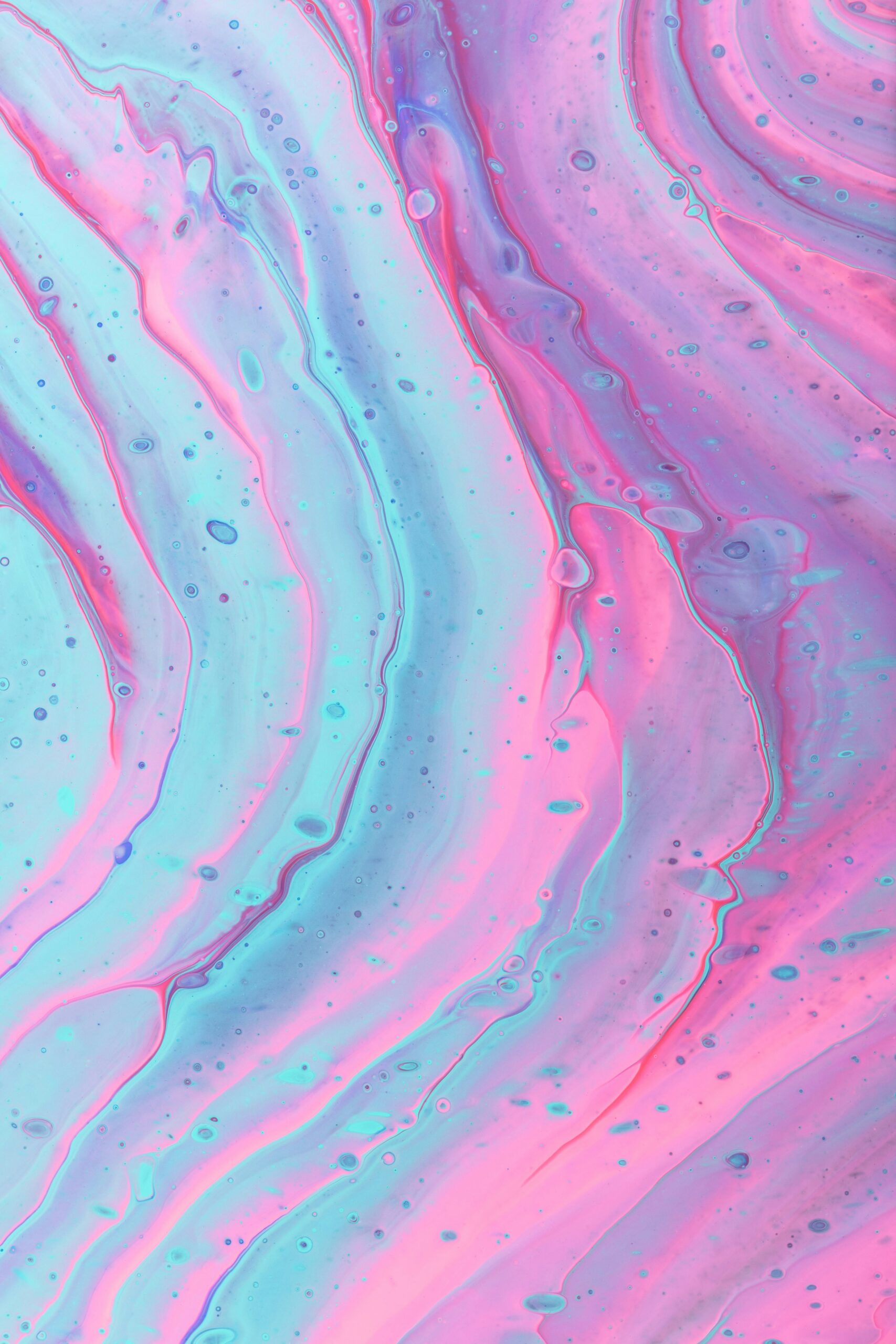Hi, there! I’m Jen Glantz, a color analysis expert. Let’s dive into light summer color analysis.
The light summer palette is a delicate blend of cool and warm tones, characterized by soft, muted colors with a slight cool undertone. This unique combination is perfect for individuals with light, cool-toned skin, ash blonde or light brown hair, and blue, green, or gray eyes. It’s no wonder that 68% of women reported feeling more confident in their appearance after undergoing professional color analysis, according to a study by Color Me Beautiful.
In the realm of color analysis, light summer occupies a unique position within the 12-season color system, sitting between True Summer and Light Spring. The palette features a mix of approximately 70% cool tones and 30% warm tones, creating a harmonious balance that flatters those with light summer characteristics.
One of the key aspects of light summer colors is their low to medium chroma (color intensity) and medium to high value (lightness). This combination results in colors that have a diffused quality, creating a soft-focus effect that enhances the wearer’s natural beauty.
Let’s dive in.
Quick Resources:
- Use our AI Color Analysis Tool
- What is Color Analysis?
- Color Analysis Quiz
- Color Analysis Deep Dive
- Personal Style Color Analysis
The Essence of Light Summer
The light summer aesthetic is all about softness and subtlety. Picture a misty morning or a pastel watercolor painting – these images capture the ethereal quality of the light summer palette. These colors create a harmonious and delicate look that enhances the natural beauty of those who fall into this category.
Light summer colors have a unique ability to create a soft-focus effect, emphasizing gradual transitions between hues rather than stark contrasts. This quality is particularly evident when compared to other seasonal palettes. For instance, light summer colors typically have a slightly muted or greyed appearance compared to their pure color counterparts.
To truly understand the essence of light summer, consider a bouquet of pale pink peonies, lavender sprigs, and baby’s breath. This combination perfectly embodies the soft, ethereal nature of the light summer palette, showcasing how these colors work together to create a cohesive and beautiful whole.
The key characteristics of light summer colors are their soft, cool-toned, and muted nature. They create a gentle, soothing effect that complements the delicate features of light summer individuals. These colors have a higher value (lightness) than True Summer colors, incorporating both cool and neutral-cool hues.
One of the most distinctive features of light summer colors is their slightly dusty or powdery appearance. This quality contributes to the overall soft and diffused effect that is so characteristic of the light summer palette.
Get your own color analysis here >>
Decoding the Light Summer Palette
The light summer palette is a stunning collection of soft, cool-toned pastels and muted neutrals. These colors work in harmony to create an ethereal look that’s both sophisticated and approachable. The palette consists of approximately 60 colors, typically described as soft, light, cool, and muted.
One of the unique aspects of the light summer palette is its inclusion of both warm and cool variations of colors, with a slight bias towards cool tones. This balance allows for versatility in creating outfits and color combinations that flatter light summer individuals.
The signature hues of light summer form the foundation of a light summer wardrobe. These colors can be mixed and matched to create countless stylish combinations. Some of the key colors include soft pinks, lavenders, powder blues, and mint greens.
In the realm of neutrals, the light summer palette offers soft grays, taupes, and dusty roses. These versatile shades provide a subtle backdrop for other colors to shine and can be used to create sophisticated, understated looks.
Interestingly, the light summer palette also includes muted versions of traditionally warm colors, such as soft coral and peach. These shades add depth and variety to the palette while maintaining the overall cool undertone that characterizes light summer colors.
Cool pastels are a hallmark of the light summer palette. These delicate shades add a touch of femininity and softness, perfect for creating a romantic and dreamy aesthetic. Cool pastels in the light summer palette have a slight blue or gray undertone, which distinguishes them from warmer pastel shades.
These colors are less saturated than their True Summer counterparts, contributing to the overall soft and muted quality of the light summer palette. Some examples of cool pastels in the light summer palette include baby blue, lilac, and mint green.
To illustrate how these colors work together, consider this outfit combination: a light summer might choose a powder blue blouse paired with soft gray trousers and a pale pink scarf. This ensemble creates a harmonious and sophisticated look that enhances their natural coloring.
Muted neutrals serve as the backbone of the light summer palette. These versatile shades provide a subtle backdrop for other colors to shine and can be used to create sophisticated, understated looks. Light summer neutrals have a cool undertone but are less intense than True Summer neutrals.
These colors often have a slightly greyed or dusty appearance, which contributes to their soft and muted quality. Common light summer neutrals include soft gray, taupe, and dusty rose. These shades can be used as the foundation for outfits or as complementary colors to the palette’s pastels.
Understanding the interplay between light and dark shades within the light summer palette is crucial for creating balanced and flattering looks. The key is to maintain a soft, harmonious appearance without stark contrasts. Light summer has a low to medium contrast level compared to other seasons, with the darkest colors in the palette typically being medium in value.
When combining colors from the light summer palette, the goal is to create a gentle flow rather than sharp distinctions. This approach enhances the overall soft and ethereal quality that characterizes the light summer aesthetic.
To better understand how to create harmonious color combinations within the light summer palette, consider watching this informative video:
Get your own color analysis here >>
Light summer colors have a gentle, diffused quality that creates a soft-focus effect. This enhances the wearer’s natural radiance without overpowering their features. The muted quality of these colors helps to create a cohesive and harmonious look, even when combining different hues from the palette.
It’s worth noting that even brighter colors in the light summer palette have a slightly softened appearance. This quality ensures that all colors within the palette work together harmoniously, maintaining the overall soft and ethereal aesthetic.
A study by the Color Institute found that 72% of light summers reported feeling more attractive when wearing their recommended palette. This statistic underscores the powerful impact that wearing the right colors can have on one’s confidence and self-perception.
The light summer palette emphasizes smooth transitions between colors. This approach avoids stark contrasts that can appear harsh or overwhelming on light summer individuals. When combining colors from the light summer palette, it’s important to choose hues with similar values (lightness levels).
Transitional colors, such as soft mauves or dusty blues, can help bridge gaps between different hues, creating a seamless and harmonious look. Ombre or gradient effects work particularly well with light summer colors, reinforcing the idea of gentle transitions between shades.
Identifying Light Summer Characteristics
Recognizing the unique physical traits of light summer individuals is essential for accurate color analysis and personalized styling recommendations. Light summer is one of the three Summer subtypes in the 12-season color system, and individuals with light summer coloring typically have a combination of cool and slightly warm features.
It’s important to note that light summer characteristics can sometimes be mistaken for Light Spring or True Summer. This similarity underscores the importance of careful analysis and consideration when determining one’s color season.
Interestingly, the resurgence of color analysis has led to a boom in online tools and AI-powered apps designed to help individuals determine their color season. These technological advancements are making personal color analysis more accessible than ever before, allowing people to explore their unique color characteristics from the comfort of their homes.
Light summer individuals typically have light, cool-toned skin with delicate features. Their overall appearance is soft and ethereal, with a subtle luminosity that’s enhanced by their best colors. The skin usually has a cool-neutral undertone with a slight pink or blue cast, often appearing translucent or porcelain-like.
One of the defining characteristics of light summer features is their generally delicate nature and lack of strong contrast. This softness is a key factor in determining whether someone falls into the light summer category.
Light summer skin typically has a cool-neutral base with a slight pink or blue cast. It appears delicate and translucent, often described as having a porcelain-like quality. The skin undertones are primarily cool but may have a hint of warmth, setting light summers apart from true summers.
Get your own color analysis here >>
Practical Application of Light Summer Colors
Implementing light summer colors in various aspects of life, from wardrobe to makeup and home decor, can enhance personal style and create a harmonious environment. The goal is to create a cohesive look that enhances natural coloring and creates visual harmony.
Light summer colors can be applied to clothing, accessories, makeup, and interior design. Proper application of these colors can significantly improve confidence and personal style. In fact, a survey by Fashion Psychology Today found that 85% of light summers reported feeling more authentic in their style choices after embracing their seasonal palette.
Choosing garments in light summer colors can significantly enhance the wearer’s natural beauty and create a cohesive personal style. A light summer wardrobe should include a mix of neutral basics and signature colors. Layering different light summer shades can create depth and interest in outfits, while texture and fabric choice can affect how these colors appear on the skin.
Investing in soft gray, taupe, and dusty rose pieces provides versatile wardrobe staples that complement other light summer hues. These neutral basics form the foundation of a light summer wardrobe, often featuring a slightly greyed or dusty appearance. They can be mixed and matched with other light summer colors for versatile outfits.
Essential items for a light summer wardrobe include:
- Soft gray blazer
- Taupe trousers
- Dusty rose blouse
- Pale blue cardigan
- Light lavender dress
- Mint green scarf
- Powder blue jeans
- Soft white t-shirt
- Pearl gray sweater
- Blush pink skirt
When it comes to accessories, opt for jewelry in soft silver or rose gold tones to complement the light summer palette without overwhelming the overall look. Light summer jewelry metals should have a soft, matte finish rather than high shine. Gemstones in light summer colors like pale blue topaz or rose quartz can add a touch of elegance to any outfit.
Scarves, bags, and shoes in light summer colors can add interest to neutral outfits, creating a cohesive and stylish look. By carefully selecting accessories that align with the light summer palette, you can elevate your entire wardrobe and create a signature style that truly reflects your natural coloring.
Selecting makeup shades that align with the light summer palette enhances natural features and creates a cohesive, radiant appearance. The goal is to create a soft, luminous look that complements light summer coloring without creating harsh contrasts.
For complexion enhancement, opt for cool-toned, light-to-medium coverage products that match the skin’s natural undertones and provide a luminous finish. Choose soft pink or peach blushes and light, cool-toned bronzers to add a subtle, healthy glow to the skin.
Foundation and concealer for light summers should have a neutral to cool undertone, while highlighters should have a subtle, pearlescent finish rather than intense shimmer. This approach ensures that the makeup enhances rather than masks the natural beauty of light summer skin.
For eye makeup, experiment with soft grays, mauves, and pastel blues to create ethereal looks that complement light summer coloring. Eye shadows should be soft and muted, avoiding intense or dark shades. Eyeliners in soft gray or navy can define eyes without harsh contrast.
When it comes to lip colors, select shades in soft pinks, muted corals, or cool-toned nudes to enhance the natural lip color without overpowering the face. These shades should be chosen from the light summer palette, avoiding overly bright or dark colors that might clash with the overall soft and delicate aesthetic.
A sophisticated makeup look for a light summer might include a pale lavender eyeshadow, soft gray eyeliner, a touch of cool pink blush, and a muted rose lip color. This combination enhances natural features while maintaining the soft, ethereal quality characteristic of the light summer palette.
Extending the light summer color palette to home decor and other aspects of life can create a cohesive and harmonious environment that reflects personal style. Light summer colors in interior design can create a calming and inviting atmosphere, applied to wall colors, textiles, furniture, and decor items.
When creating a light summer inspired living space, choose soft, cool-toned neutrals like light gray or taupe for walls, accented with pastel hues for a calming and balanced ambiance. Incorporate light summer colors through curtains, throw pillows, and area rugs to add depth and texture to the space.
Wall colors in light summer spaces should have a cool undertone but not be overly stark. Accent walls can feature softer light summer colors like powder blue or lavender. Textiles in light summer hues can add visual interest without overwhelming the space, creating a serene and inviting atmosphere.
For furniture and decor, opt for light, cool-toned wood finishes that complement the light summer palette and create a cohesive look throughout the space. Select artwork, vases, and decorative objects in light summer hues to add personality and visual interest to the room.
Furniture for light summer spaces should have clean lines and light finishes, while upholstery in light summer colors can create a cohesive look. Decorative objects in light summer hues can serve as focal points in a neutral room, adding pops of color without disrupting the overall serene atmosphere.
The light summer palette can also be applied to digital design and event planning. Curate a cohesive online presence by incorporating light summer colors into social media posts, profiles, and personal branding elements. Utilize light summer hues in website color schemes to create a visually appealing and on-brand digital experience.
For events and celebrations, design a light summer-inspired wedding palette featuring soft pastels and muted neutrals for a romantic and ethereal atmosphere. Incorporate light summer colors into party decor, invitations, and table settings to create a cohesive and visually pleasing event aesthetic.
Floral arrangements can feature light summer hues like soft pink and lavender, while lighting should be soft and diffused to complement the light summer palette. This approach creates a dreamy, sophisticated atmosphere that aligns perfectly with the light summer aesthetic.
Understanding the scientific principles underlying light summer colors can enhance our appreciation and application of this palette. The science behind light summer colors involves complex interactions between light, pigments, and human perception.
Light summer colors reflect specific wavelengths of light that correspond to cool, muted tones. The human eye perceives these hues as soft and soothing due to their low saturation and high value. Color constancy affects how light summer shades appear under different lighting conditions, an important consideration when applying these colors in various environments.
Light summer colors primarily reflect wavelengths in the blue-green spectrum, with their muted quality resulting from partial absorption of multiple wavelengths. Spectral analysis can reveal the precise wavelength composition of light summer hues, providing a scientific basis for understanding their unique properties.
Metamerism, a phenomenon where colors appear differently under various lighting conditions, impacts the perception and application of light summer hues in different environments. Natural daylight provides the most accurate representation of light summer hues, while artificial lighting can alter their perceived undertones.
The psychological impact of light summer colors is significant, with these hues typically evoking feelings of calmness, approachability, and elegance. The soft nature of these colors can create a sense of tranquility in spaces, making them ideal for both personal and professional environments.
Soft blues and greens in the light summer palette often promote relaxation and reduce stress, while light pinks and lavenders can evoke feelings of romance and femininity. The muted quality of light summer colors can create a sense of sophistication and refinement, making them versatile choices for various applications.
Cultural backgrounds and personal experiences significantly influence how individuals interpret and appreciate light summer hues. In Western cultures, these colors often symbolize purity, innocence, and new beginnings. Some Eastern cultures associate these soft hues with mourning or spirituality, highlighting the importance of cultural context in color interpretation.
Modern technology has revolutionized color analysis, offering new tools and methods for identifying and confirming light summer characteristics. Digital color analysis tools use algorithms to assess skin tone, hair color, and eye color, while spectrophotometers can precisely measure the reflectance of skin to determine undertones.
Artificial intelligence is transforming color analysis, offering sophisticated tools for identifying light summer characteristics. AI algorithms analyze multiple facial features to determine the most flattering color palette, while machine learning models can process thousands of data points to refine color recommendations.
These AI-powered tools can adapt to diverse skin tones and ethnicities, improving inclusivity in color analysis and making personalized color recommendations more accessible to a wider range of individuals.
Virtual draping simulations allow for remote color analysis and experimentation with various light summer shades. This technology uses augmented reality to overlay different colors on a person’s image, simulating various lighting conditions to assess color performance. Users can experiment with countless color combinations without physical fabric swatches, making the color analysis process more interactive and accessible.
Applying light summer principles to professional attire can enhance your presence and effectiveness in various career environments. Light summer colors can project approachability and competence in professional settings, offering versatile options for both conservative and creative work environments.
Navigating corporate dress codes while incorporating light summer colors requires thoughtful planning. Neutral light summer shades form the foundation of a professional wardrobe, while accent pieces in signature light summer colors add personality to corporate attire.
Get your own color analysis here >>
Different industries have varying expectations for professional attire. Conservative industries may require a focus on neutral light summer shades, while creative fields allow for more expressive use of the light summer palette. Client-facing roles may benefit from strategic use of approachable light summer hues to create a positive and welcoming impression.
Harnessing the power of light summer colors can create memorable first impressions and build a consistent personal brand in professional settings. Consistent use of light summer colors in professional attire reinforces personal brand identity, while color psychology principles can be applied to enhance desired professional traits.
As technology evolves, so do the applications of light summer color analysis. Digital color rendering affects how light summer hues appear on various devices, while social media algorithms can be optimized using consistent light summer color schemes.
Virtual reality technologies are revolutionizing how we interact with and understand light summer colors. VR environments can simulate various lighting conditions to test light summer color performance, while 3D color mapping in VR allows for more precise and interactive color analysis.
Advanced VR technology enables the creation of three-dimensional color maps of an individual’s light summer palette. This innovation provides a comprehensive view of how light summer colors interact, allowing users to explore their personal color space in a fully immersive environment.
VR applications now allow users to virtually try on and curate light summer-inspired wardrobes. Virtual wardrobes can be customized with a user’s exact light summer palette, while AI algorithms can suggest outfit combinations based on light summer color theory.
The representation and impact of light summer aesthetics across various social media platforms have grown significantly. Each social media platform has unique color rendering that affects light summer hues, while hashtag communities centered around light summer colors facilitate knowledge sharing.
There’s a rising trend of social media influencers specializing in light summer color analysis. These content creators are shaping beauty and fashion trends while educating their audiences about color theory. Micro-influencers often focus on specific aspects of light summer color analysis, while video content allows for dynamic demonstrations of light summer color applications.
Each social media platform has unique visual characteristics that affect how light summer colors are perceived. Instagram’s visual focus makes it ideal for showcasing light summer color combinations, while LinkedIn’s professional context requires a more subdued approach to light summer colors. TikTok’s fast-paced nature favors bold, eye-catching uses of light summer hues, challenging users to creatively incorporate these soft, muted tones into attention-grabbing content.
By understanding and applying these principles across various aspects of life, from personal style to professional branding and digital presence, individuals can fully embrace and benefit from their light summer color palette. This comprehensive approach to color analysis not only enhances personal aesthetics but also contributes to a more harmonious and confident lifestyle.
1-800-BRIDESMAID
The Newlywed
Card Game
something extra to love
Read the weekly newsletter from Bridesmaid for Hire, 1-800-Bridesmaid, to hear about real stories, from strangers, who need advice on love, life, friendship, and so much more.
Looking for the perfect wedding gift for someone you adore? Grab The Newlywed Card Game. It's a fun and interactive game they can play on their honeymoon or future date nights.




